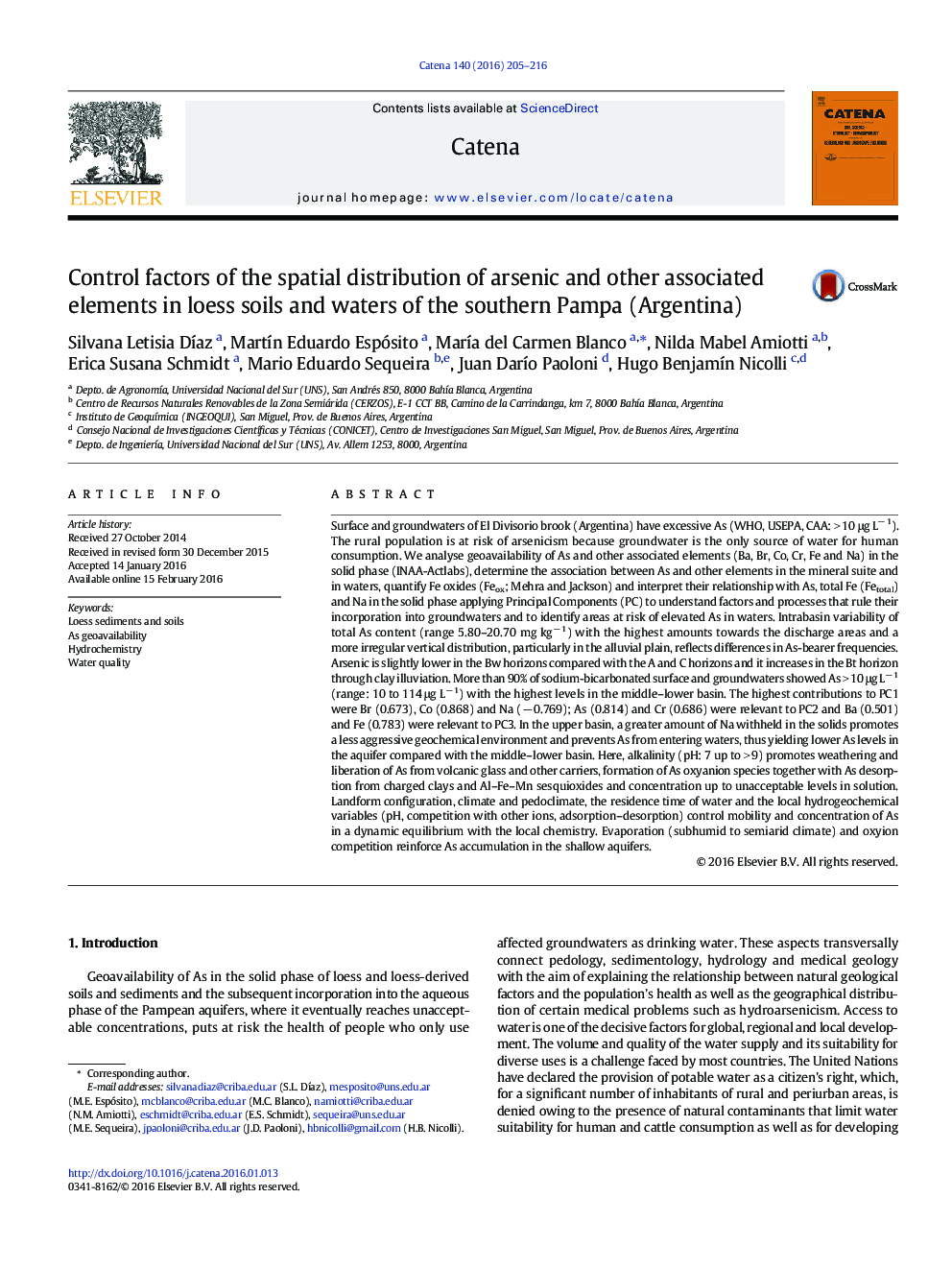| کد مقاله | کد نشریه | سال انتشار | مقاله انگلیسی | نسخه تمام متن |
|---|---|---|---|---|
| 4570933 | 1629212 | 2016 | 12 صفحه PDF | دانلود رایگان |
• As waters of El Divisorio basin, southern Pampean region of Argentina
• As in the solid phase of loess lithology in contact with phreatic waters
• Geogenic and pedogenetic processes of As release and concentration in the aquifer
Surface and groundwaters of El Divisorio brook (Argentina) have excessive As (WHO, USEPA, CAA: > 10 μg L− 1). The rural population is at risk of arsenicism because groundwater is the only source of water for human consumption. We analyse geoavailability of As and other associated elements (Ba, Br, Co, Cr, Fe and Na) in the solid phase (INAA-Actlabs), determine the association between As and other elements in the mineral suite and in waters, quantify Fe oxides (Feox; Mehra and Jackson) and interpret their relationship with As, total Fe (Fetotal) and Na in the solid phase applying Principal Components (PC) to understand factors and processes that rule their incorporation into groundwaters and to identify areas at risk of elevated As in waters. Intrabasin variability of total As content (range 5.80–20.70 mg kg− 1) with the highest amounts towards the discharge areas and a more irregular vertical distribution, particularly in the alluvial plain, reflects differences in As-bearer frequencies. Arsenic is slightly lower in the Bw horizons compared with the A and C horizons and it increases in the Bt horizon through clay illuviation. More than 90% of sodium-bicarbonated surface and groundwaters showed As > 10 μg L− 1 (range: 10 to 114 μg L− 1) with the highest levels in the middle–lower basin. The highest contributions to PC1 were Br (0.673), Co (0.868) and Na (− 0.769); As (0.814) and Cr (0.686) were relevant to PC2 and Ba (0.501) and Fe (0.783) were relevant to PC3. In the upper basin, a greater amount of Na withheld in the solids promotes a less aggressive geochemical environment and prevents As from entering waters, thus yielding lower As levels in the aquifer compared with the middle–lower basin. Here, alkalinity (pH: 7 up to > 9) promotes weathering and liberation of As from volcanic glass and other carriers, formation of As oxyanion species together with As desorption from charged clays and Al–Fe–Mn sesquioxides and concentration up to unacceptable levels in solution. Landform configuration, climate and pedoclimate, the residence time of water and the local hydrogeochemical variables (pH, competition with other ions, adsorption–desorption) control mobility and concentration of As in a dynamic equilibrium with the local chemistry. Evaporation (subhumid to semiarid climate) and oxyion competition reinforce As accumulation in the shallow aquifers.
Journal: CATENA - Volume 140, May 2016, Pages 205–216
